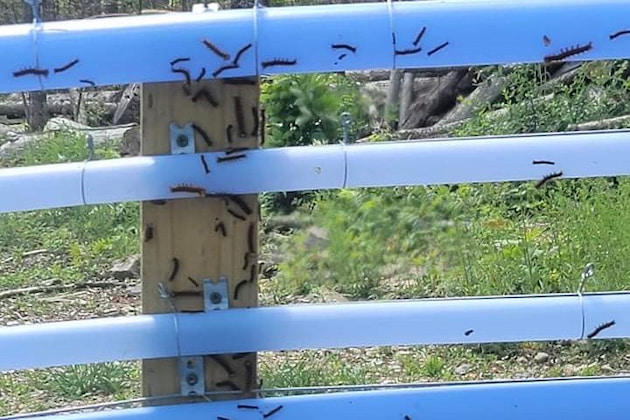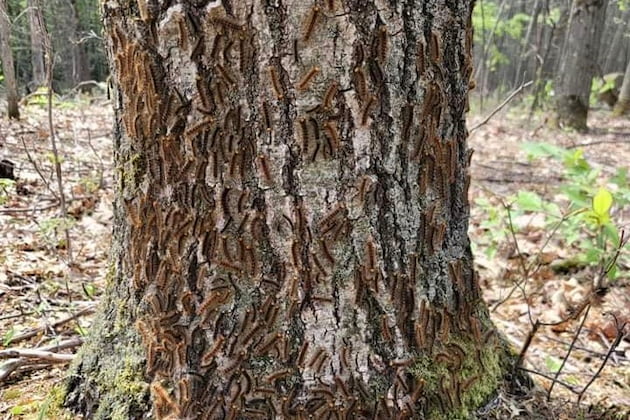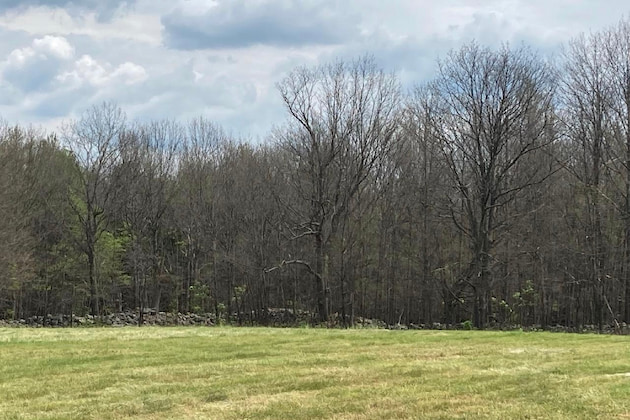Sugarbush Management
'Biblical' infestation of Gypsy moth caterpillars are attacking sugarbushes in the Northeast
Time window to spray is over, leaving some sugarmakers helpless
By PETER GREGG | JUNE 11, 2021
WEST CHAZY, N.Y.—Gypsy moth caterpillars are attacking sugarbushes.
“It is truly biblical in proportion with larvae crawling everywhere, dropped on you from above and even eating foliage from hay in the fields,” said Laura Trudeau, one of the operators at Parker Family Maple in West Chazy, N.Y. where with husband Mike Parker, upwards of 100,000 trees are tapped.
Trudeau said the farm spent $47,000 to spray their sugarbush with Bacillus thuringiensis, called "Bt,” a natural insecticide that is the only approved spray for use in sugarbushes.
“We were definitely nervous to bite the bullet and pay that much but figured it's better than potentially losing much more as lost revenue from poor sap production or if trees die, in the worst case scenario,” Trudeau told The Maple News on Thursday. “Now, seeing how bad it is where we didn't spray, we are glad we did it. “
Unfortunately for other sugarmakers in the area, the time window to spray forests is over. The timing of spraying has to be just right and by now the caterpillars are probably too big for the Bt to be effective, officials said.
Trudeau said neighboring sugarmakers have experienced complete deforestation.
Meanwhile, on the opposite side of Lake Champlain in Vermont, caterpillars are attacking there too.
“Definitely getting reports of Gypsy moth here in Vermont,” said Mark Isselhardt, the maple specialist for the UVM Extension Service in Morrisville, Vt. “Most have been west of the Green Mountains, Champlain Valley and north into Franklin County.”
Isselhardt said Gypsy moth caterpillars tend to favor a different mix of hardwood species like Oak and have been documented to feed on 300 species.
“They will eat maples but it’s not as favored as Forest tent caterpillars are,” Isselhardt said, citing the other tree eating pest that has plagued Vermont in recent years.
The larval stage of the Gypsy moth is hairy caterpillar, and a mature larva can grow to two and a half inches long with a yellow and black head, according to Clinton County, N.Y. conservation officials.
It’s the young larvae that feed on foliage and remain on host plants night and day. Feeding on leaves can last for up to six weeks, the conservation district said.
Frass dropping from trees is common. Caterpillars may move down into bark crevices during daytime and return to canopy feed at night.
Now that the caterpillars are more developed, sugarmakers are largely helpless and can only hope for the best.
Isselhardt said the caterpillars would not likely kill a maple in the first year of infestation.
“That being said, a smaller number of trees that are already dealing with one or more stresses may not make it,” he said. “A lot depends on how an individual was doing at the time of defoliation.”

































